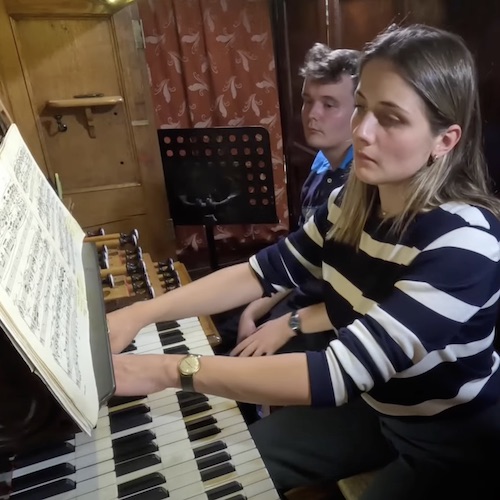CAVAILLÉ-COLL
Basilica of Saint Sernin Toulouse
Organ details
History
Toulouse is fortunate to have one of the masterpieces produced by the celebrated organ-builder Aristide Cavaillé-Coll (1811-1899), who was born in the nearby Tarn department.
Cavaillé-Coll was a legend in his own lifetime, indeed he was only 22 years old when he left the family workshop in Toulouse to build the organ for the Basilica of Saint-Denis, near Paris. A long string of triumphs followed, with Cavaillé-Coll building more than 500 instruments all over Europe, for the largest cathedrals and the most exclusive private salons. Unfortunately, after his death most of his great instruments were transformed to suit the neo-classical aesthetic en vogue at the turn of the 20th Century. Luckily for Toulouse, the organ of Saint-Sernin, on which the master organ builder had lavished so much attention, avoided any such mutilation. As a result, we can still listen today to the perfect harmonies intended by its builder, so astonishingly well adapted to the proportions and acoustics of its church. The organ was inaugurated in November 1889 by Alexandre Guilmant. The Committee in charge of its formal acceptance immediately understood that this was no ordinary organ. After examining it for three days the Committee issued a glowing report that established the organ as a chef-d’œuvre from the outset.
The instrumental aspect of the “Grand Orgue” has been listed as a Historic Monument since 19 October 1975.
The great gallery organ in the Basilica of Saint-Sernin, with its 54 stops on three keyboards and a pedal-board, is a perfect example of French symphonic organ-building at the end of the 19th Century. Organists come from all over the world to play pieces by César Franck, Charles-Marie Widor, Louis Vierne or Franz Liszt. Here they find the purity of the original tones and effects that are so closely associated with this type of organ and this style of music.
The Saint-Sernin organ closely reproduces the sound of a symphony orchestra.
Multimedia library
Specification
| I. Grand-Orgue C-g3 | II. Positif de dos C-g3 | III. Récit expressif C-g3 | Pedal C-f1 | |
| Montre 16 Bourdon 16 Montre 8 Bourdon 8 Flûte harmonique 8 Salicional 8 Gambe 8 Prestant 4 Flûte octaviante 4 Quinte 2 2/3 Doublette 2 Fourniture V Cymbale IV Cornet V Bombarde 16 Trompette 8 Clairon 4 Clairon-Doublette 2 Trompette harmonique * 8 Clairon harmonique * 4 * Jeux en chamade | Montre 8 Cor de nuit 8 Salicional 8 Unda maris 8 * Prestant 4 Flûte douce 4 Carillon I-III Trompette 8 Basson-Hautbois 8 * Clairon 4 * Jeux XIXe apportés par Boisseau-Cattiaux | Quintaton 16 Diapason 8 Flûte harmonique 8 Viole de gambe 8 Voix céleste 8 Flûte octaviante 4 Octavin 2 Cornet V Bombarde 16 Trompette harmonique 8 Clarinette 8 Basson-Hautbois 8 Voix humaine 8 Clairon harmonique 4 | Principal-basse 32 Contrebasse 16 Soubasse 16 Flûte 8 Violoncelle 8 Octave 4 Bombarde 32 Bombarde 16 Trompette 8 Clairon 4 | Accessoires aux pieds Orage Accessoires aux mains Annulation Pos en 8 Traction mécanique des notes avec Barker au GO et au Réc |


